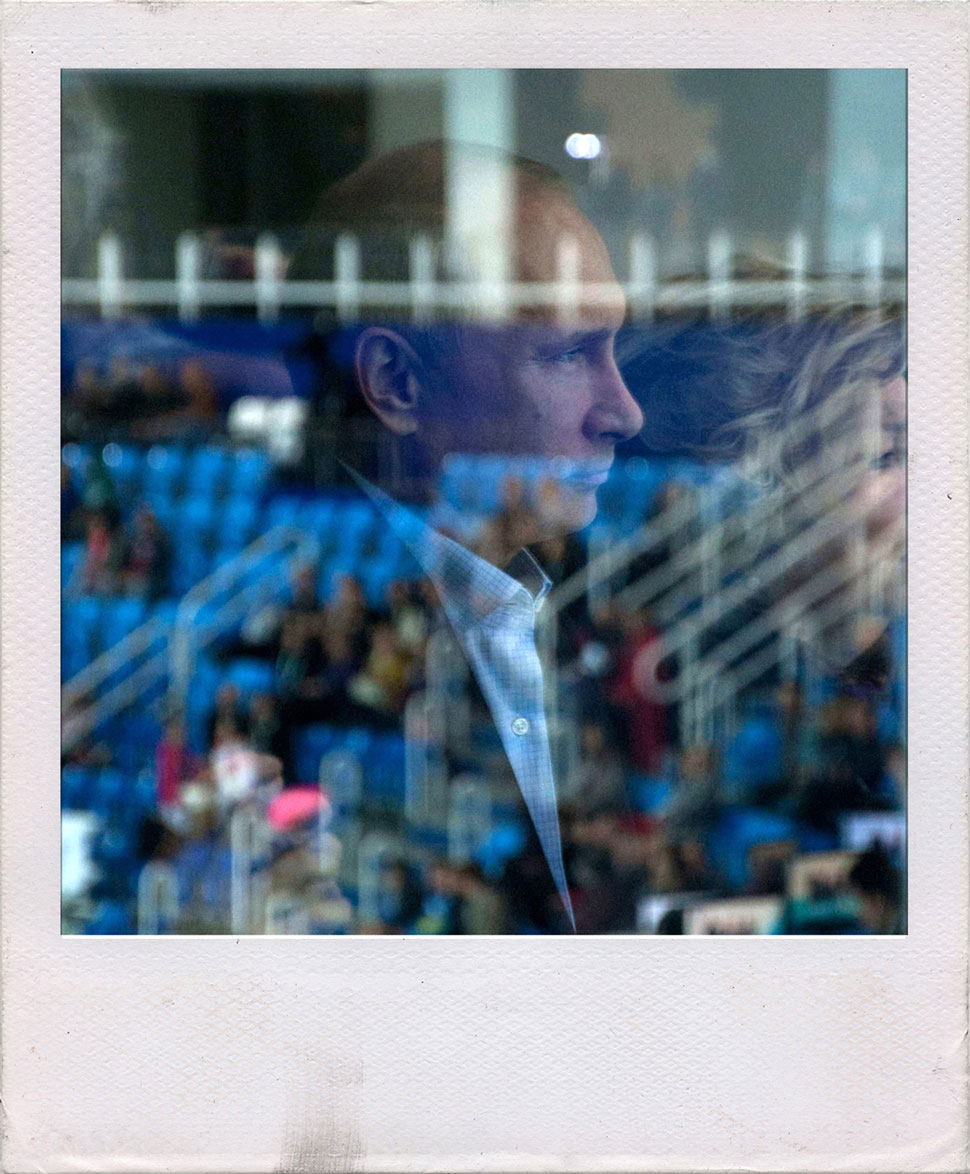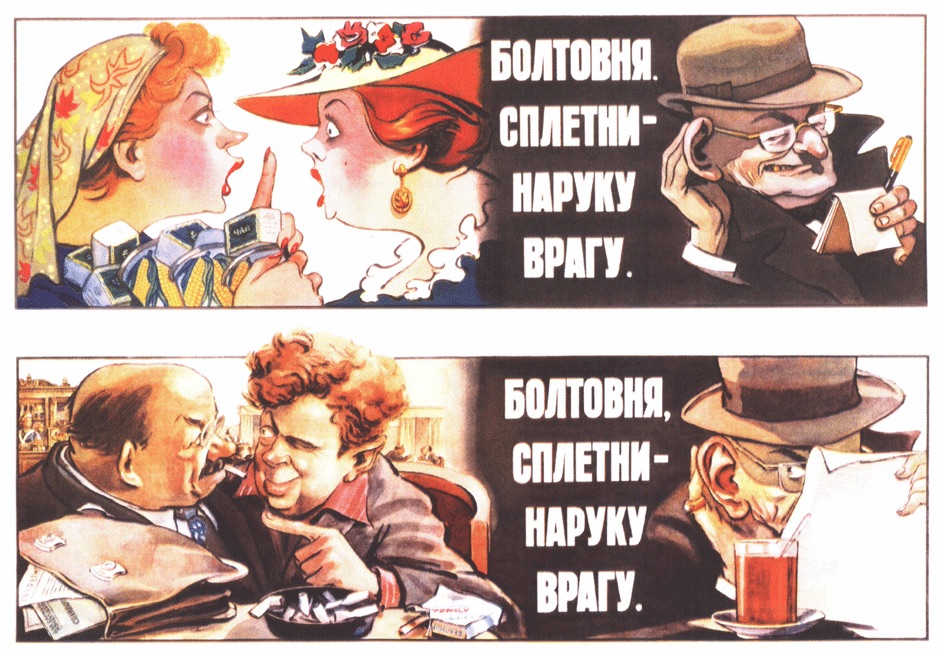The problem with “Walter Cronkite and the rest of them,” the American correspondents in Moscow, my grandmother used to tell me, was that all they ever did was regurgitate the Soviet media. The only exception was, she said, The New York Times’ Harrison Salisbury, who seemed to find sources and stories outside Pravda. My grandmother worked as the censor for foreign correspondents stationed in Moscow. She was never allowed to have direct contact with correspondents, but they loomed large in her imagination, and she in theirs. She loved Salisbury’s stories because they gave her something to read, and a lot of work: whenever she encountered a passage that had not been lifted directly from a Soviet newspaper, she translated it into Russian and called it in to Stalin’s secretary: decisions on what would be cut and what would be transmitted were made in the Kremlin.
Salisbury was even more inventive than my grandmother realized: after a while he devised a system for fleshing out his reporting. He would fill his dispatches with reasonable and not-so-reasonable guesses on policy and would treat the censorship process as a sort of interview: whatever was cleared for dispatch, was confirmed. Ingenious as this reporting-by-groping-in-the-dark approach was, Salisbury found it frustrating and lobbied his editors, long and unsuccessfully, to include a disclaimer with his stories, letting the readers know that his dispatches had been edited by the Soviet censor. What he never realized was that his editor was occasionally Stalin himself.
All journalists rely on the voices of their sources, but reporting from a country where access to information is highly restricted presents both special challenges and hard lessons. Traditionally, foreign reporters in Russia have relied heavily on sources who, even if they are not Joseph Stalin himself, are close to the seat of power, where information is concentrated. Even after direct censorship of foreign correspondents was abolished in the late 1950s, a variety of restrictions compelled Moscow correspondents to err on the side of official sources. During perestroika, the story was its own justification: change was largely coming from the top. Still, the best reporters took advantage of the opening to venture further and deeper into Soviet society than any of their predecessors had. “The last generation of foreign reporters in the Soviet Union was the luckiest,” David Remnick, the future editor of The New Yorker, wrote about his book, Lenin’s Tomb, the journalistic account of Russia to which all subsequent books in the genre were destined to be compared.
The generation of Moscow correspondents that came onto the scene two decades later was, arguably, the least fortunate. Unlike their predecessors, who witnessed a country opening up, those who have been writing about Russia since 2000 have been forced to describe a country shutting down. It is a sad and graceless task: one’s vision is continuously obscured by the very process one is trying to understand. It also has meant, to a degree unacknowledged today just as it was in Salisbury’s time, a recourse again to sources in and around the Kremlin. The wars in Syria and Ukraine, the political crackdown of the last few years, the apparent accompanying rise in Putin’s popularity, and even the fate of those who led or took part in the Russian protests of 2011-2012 are all topics that, in Western coverage, have largely been framed by the Kremlin, even as the reporters in question increasingly see the ancient Russian fortress as the seat of evil.
Consider the case of Steven Lee Myers’s The New Tsar: The Rise and Reign of Vladimir Putin. A correspondent for The New York Times in Moscow for seven of the sixteen years that Putin has been in power in Russia, Myers has joined the ranks of authors attempting to make sense of the last decade and a half of Russian life and politics. Other recent books in this area have focused on particular aspects of Putinism: Peter Pomerantsev’s Nothing Is True and Everything Is Possible looked at propaganda; Andrei Soldatov and Irina Borogan’s The Red Web focused on censorship; Karen Dawisha’s Putin’s Kleptocracy tracked theft and graft. Focusing on a specifically delineated story, as these authors have, provides a partial solution to the problem of unreliable and unverifiable sources—but can sometimes resemble a blind man’s attempt to describe an elephant by feeling a small part of its body.
Unlike all of these books, Myers tries to tell the story of everything, from Putin’s rise to power to the strange four-year interlude when Dmitry Medvedev occupied the president’s chair, to the protests of 2011 and 2012 and then the Sochi Olympics and the war in Ukraine. Overall, he argues that Putin has followed a classic dictator’s arc, from good intentions to ever increasing power, isolation, and aggression.
Advertisement
Its wide scope is both the book’s strength and the source of some of its limitations. Myers places some frequently discussed events in relation to international developments that other books have left out, particularly the evolving state of Russian-American relations. This background, which was important to Myers when he wrote about Russia for a US newspaper audience, seems particularly valuable now, when so much of what the Kremlin does is inflected by Russia’s relationship with the United States. For example, he reminds the reader that in 2011, during Medvedev’s presidency, Russia dropped its objections to US intervention in Libya—a useful counterpoint to Putin’s intransigent support for Bashar al-Assad in Syria.
But the newspaper reporter’s tendency to present as facts the interpretation of events put forward by one’s sources may also be the book’s greatest weakness. When Myers, for example, describes the transfer of the Russian presidency from Medvedev back to Putin in 2011 and 2012, he adopts the theory—promoted by some Kremlin watchers—that there was a genuine rivalry between Putin and his more-liberal-minded protégé in which Putin ultimately triumphed, forcing Medvedev to give up the presidency without a fight. But both men claimed publicly that they had agreed on the handover of power months or years earlier—and Myers provides no persuasive evidence to convince the reader to disbelieve them. In these chapters, Myers shifts his point of view from Putin to Medvedev, writing about what the junior politician felt and believed, including imputing to him a lesser distrust “of the West, of democracy, of human nature.” The reader never learns how the author knows these things. His objective correspondent’s voice sounds jarring when he writes as though he could get in his characters’ heads.
The problem with such speculation, even when well-informed, is that persistent repetition, in the absence of a clearly audible alternative, has a way of turning what is merely a supposition into an accepted story, heard as fact. Listening continuously and predominantly to sources in and around the Kremlin has produced a number of such widely accepted but uncorroborated stories. Some of them are fairly innocuous, but others stand in the way of a deeper understanding of Russian life and politics. Myers opens the book with a highly detailed description of a 1941 battle on the Neva River, near Leningrad, in which Vladimir Spiridonovich Putin, the future father of the future president, was wounded:
His orders seemed suicidal. He was to reconnoiter the German positions and, if possible, capture a “tongue,” slang for a soldier to interrogate….There was no choice but to obey. He and another soldier approached a foxhole along a dug-in front, carved with trenches, pocked with shell craters, stained with blood. A German suddenly rose, surprising all three of them. For a frozen moment, nothing happened. The German reacted first, unpinned a grenade and tossed it. It landed near Putin, killing his comrade and riddling his own legs with shrapnel. The German soldier escaped, leaving Putin for dead.
Vladimir Putin Senior has been dead for sixteen years and there is no known record of his recounting the story of the battle. Instead, Myers relies on the Russian state news agency RIA and on the younger Vladimir Putin’s authorized biography for the details. These are the instruments of myth-making, and they deserve to be examined as such, but Myers puts them forward as fact.
Propaganda is most effective when it succeeds in imposing its language and framing on events. Myers is certainly no Putin apologist—he does not mean the word “tsar” in any way that could be construed as complimentary. Yet the later pages of his book are, sadly, replete with examples of just how well Kremlin propaganda works. When Myers describes Putin’s campaign against protesters in 2012, he writes, “One wanted activist, Leonid Razvozzhayev, fled to Ukraine but was arrested there by masked agents and returned to Moscow, where he claimed he had been kidnapped and tortured.” In fact, Russian law enforcement has no right to make an arrest outside of Russia, so any such incident in Ukraine was a kidnapping–yet the way this sentence is structured suggests that Razvozzhayev’s “arrest” is a fact while his kidnapping is merely a “claim.”
In another instance, Myers acknowledges that the mass protests in 2011 and 2012 involved people across Russia, from all social and economic backgrounds—a reality that was well documented by researches in Russia (the Levada Center) and outside of it (Mischa Gabowitsch at the Einstein Institute in Potsdam). But then he proceeds to use Kremlin tropes about the protesters, referring to them as the “disgruntled elites.” Myers also adopts the Kremlin’s classification of “systemic” (meaning, integrated into government institutions) and “nonsystemic” (meaning, shut out by the Kremlin) opposition. Quite apart from the problematic distinction this phrasing implies—between a sort of civilized, integrated opposition and the wild people out in the streets—the use of “opposition” is itself a misnomer because the word implies a level of organization and visibility impossible in today’s Russia.
Advertisement
The Kremlin’s efforts to shape the telling of events work in counter-intuitive ways. We may think of propaganda affecting mostly a domestic Russian media audience—and it does, but that audience has the option of shutting off the television and shrugging off the news. Moscow correspondents are not so lucky. They have to work with the available information, and if they conclude that the best and most important sources of information are those who hold the most of it, then they subject themselves to a constant barrage of propaganda. It may be that no amount of critical thinking is sufficient to counter the misleading or misinformed intentions of their sources: not only facts but also frames and basic assumptions must be questioned. But if nothing can be trusted, how can anything be used?
Harrison Salisbury was acutely aware of this problem. In his letters, he constantly complained of deteriorating as a reporter and warned his editors that his “news sense is not as sharp as it should be.” He asked for an outside perspective and in 1950 requested a leave of absence in order to air out his head. His editors were not particularly helpful on either count. Salisbury may have been more humble and more given to self-doubt than present-day correspondents. Or he may have been helped by the fact that his communication with the Kremlin occurred by way of an intermediary—my grandmother—and even she hid behind a curtain. He may thus have been spared the seductive sense of self-importance that access to the inner circle—or to those who claim to have access to the inner circle—can confer, especially in a society where everything, including access, is closing down.
Steven Lee Myers’s The New Tsar: The Rise and Reign of Vladimir Putin is published by Penguin Random House.




